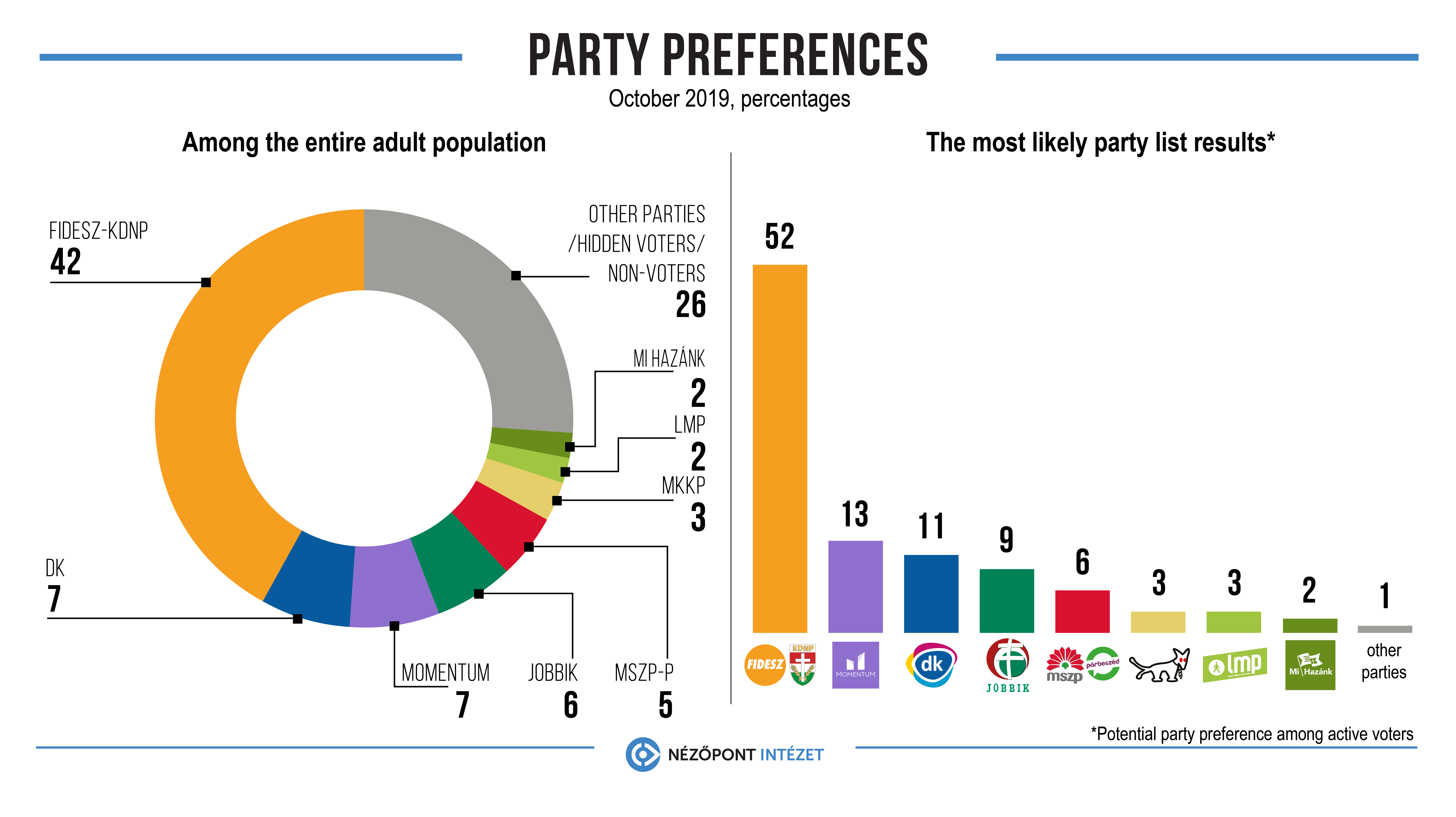Even after the municipal elections, Fidesz-KDNP maintain their significant lead, with 52 percent of active voters supporting their policy. Opposition parties are close in a home competition currently being led by Momentum, which would reach 13 percent on a list this Sunday, closely followed by the Democratic Coalition (11 percent) and Jobbik (9 percent), reveals a poll conducted by Nézőpont Intézet in October on behalf of Hungarian daily newspaper Magyar Nemzet.

In terms of the most likely list results, Fidesz-KDNP would win 52 percent of the votes cast if an election were held this Sunday. Support for the governing parties has remained high since the EP elections: Every second active voter is their sympathiser. Opposition supporter numbers show some minor changes but all within the margin of error. The rivalry between Momentum and the Democratic Coalition (DK) has benefited the former this time: Momentum stands at 13 percent, while Gyurcsány’s Democratic Coalition (DK), these days also counting Olga Kálmán as a member, gets 11 percent from active voters. Support for Jobbik, currently looking for a party chairman, is up by one percentage point, but at 9 percent support for the party’s politics their popularity index still remains single digit.
There is no change in the voting base for the MSZP-P alliance (6 percent), which also means that the left-wing coalition would not be able to cross the 10 percent threshold on joint listing in a parliamentary election this Sunday. Other opposition parties have similar concerns. Support for the Hungarian Two-Tailed Dog Party (MKKP) and the LMP stands at 3 percent, while for the Our Home Movement (Mi Hazánk) at 2 percent, meaning that these parties would not be able to secure parliamentary representation on their own.
The post-municipal election survey also reveals that similarly to the results of the EP elections, Fidesz-KDNP remains the most popular party in Budapest, with 39 percent of support among active voters. The strongest opposition force is Momentum standing at 20 percent in the capital, followed by the Democratic Coalition (DK) at 15 percent. Compared to their national results, the MSZP-P performed better here and stands at 9 percent. The government parties’ results and their advantage ahead of the opposition are greater outside of Budapest. Away from the capital, the right-wing coalition stands at 55 percent. In the country, just as in Budapest, Momentum is the strongest opposition party at 12 percent, followed by the Democratic Coalition (DK) at 10 percent. While in Budapest support is at 60 percent for the parties of a united opposition, it is 44 percent in the country, where the majority of the total population reside.
| Fidesz KDNP |
Momentum | DK | Jobbik | MSZP P |
MKKP | LMP | Mi Hazánk |
|
| Total Population | 42 | 7 | 7 | 6 | 5 | 3 | 2 | 2 |
| Active Voters | 52 | 11 | 10 | 7 | 5 | 2 | 2 | 2 |
| Most Likely List Result | 52 | 13 | 11 | 9 | 6 | 3 | 3 | 2 |
Just as leading up to the municipal elections, the proportion of people who are politically active but have no party preference was high this time as well. In Nézőpont Intézet’s latest poll the proportion of active voters within the total population was 17 percent, while that of inactive respondents was 9 percent.
Methodology
The survey of Nézőpont Institute was conducted from 14 to 27 October 2019, through personal interviews with 2 300 people. The sample is representative regarding the population over 18 years of age by gender, age, region, settlement type and educational level. With a sample of 2 300 and a confidence level of 95 percent, the sampling error is 2.1 percent.
